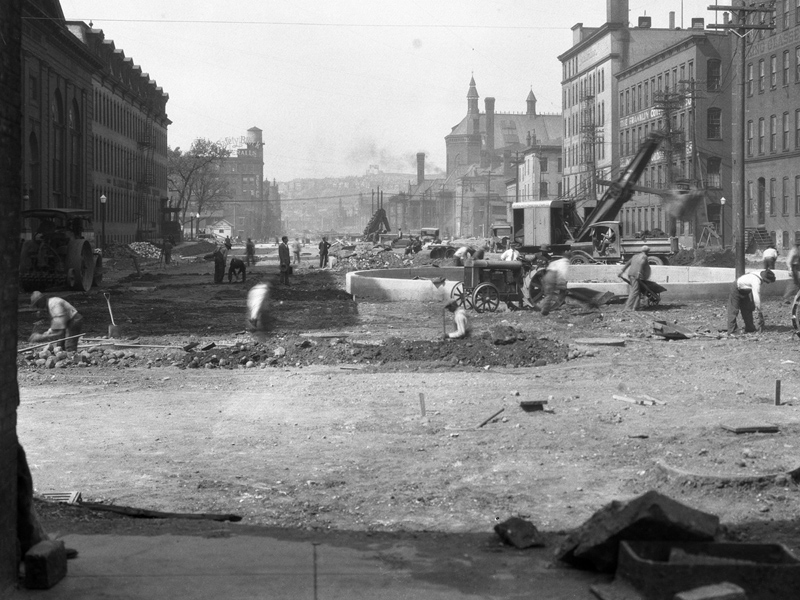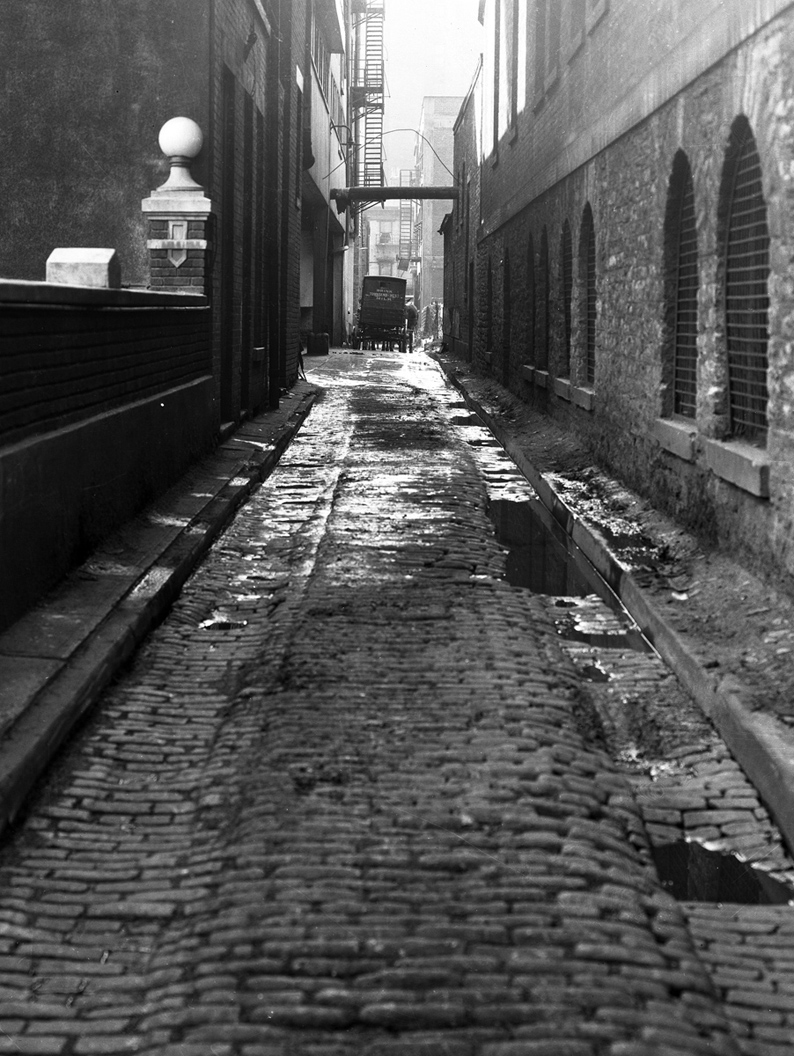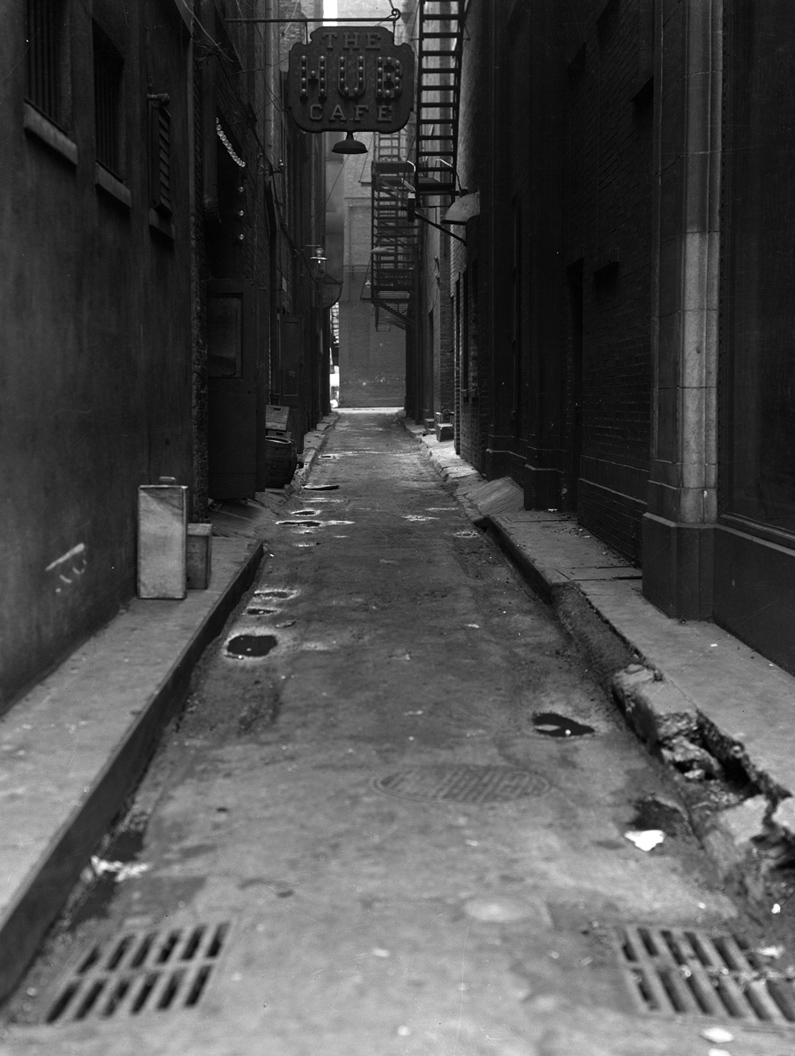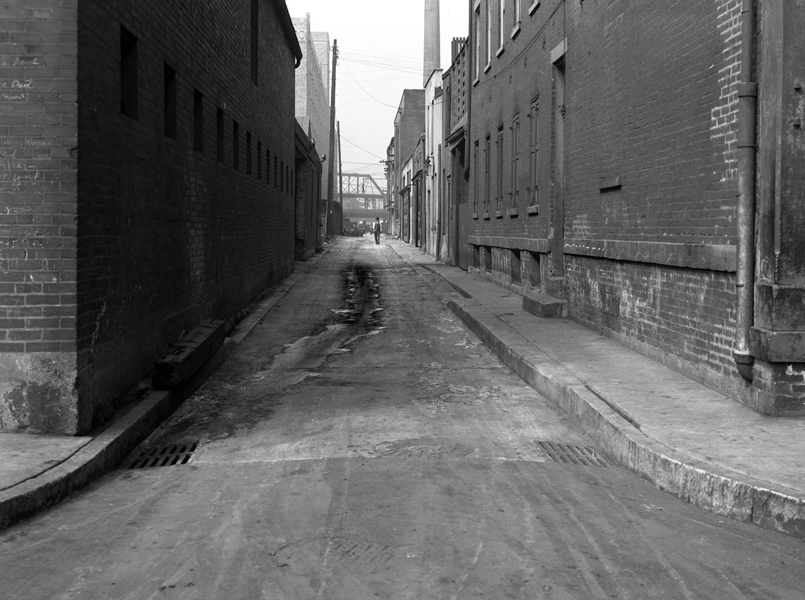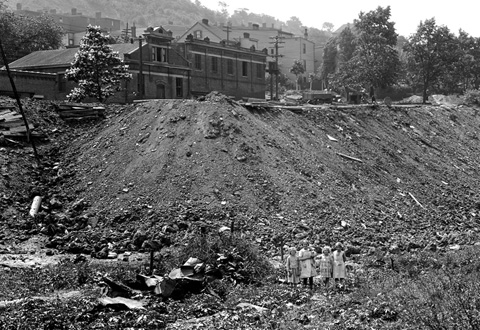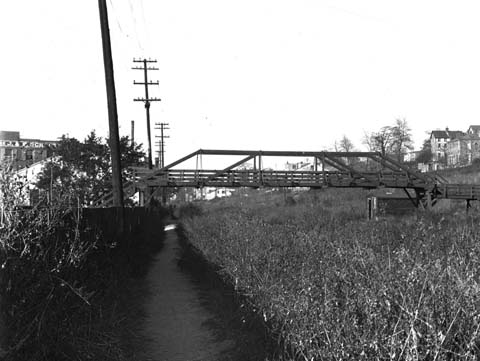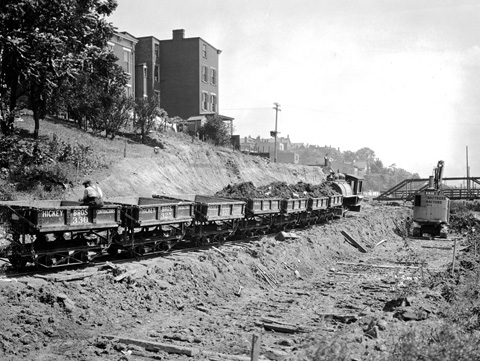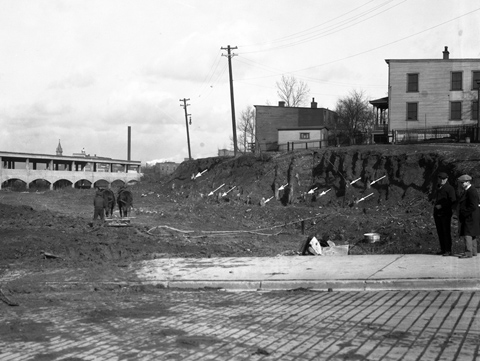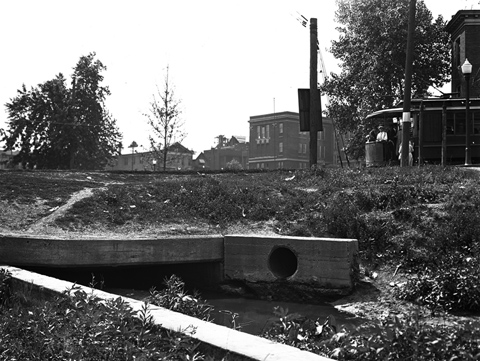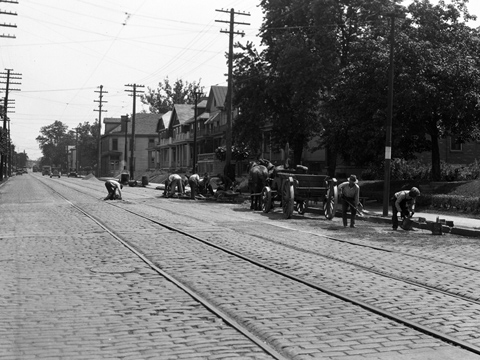By Angela Vanderbilt
In keeping with the neighborhood theme of last week’s blog, I wanted to take a closer look at some of the neighborhoods through which the collection of subway and street improvement photographs passes. The collection is a fantastic study of Cincinnati’s urban development as the city grew in those early decades of the 20th century and some neighborhoods expanded and others were established. Many of the streets and boulevards that bounded the neighborhoods of the collection have changed over time, with expansion as well as other city infrastructure improvements.
The collection begins its journey in downtown Cincinnati along “Canal Street”, known today as Central Parkway. The earliest photographs in the collection focus on subway construction work between Walnut Street to the east and Plum Street to the west, as well as street improvement work around the downtown area and along the riverfront. Using the information written on the negatives, we are able to identify the specific location of the majority of photographs on a map. However, some of the streets and alleys named in the photographs in this section of downtown no longer exist. High-rise office buildings, convention centers, and sports arenas now occupy the spaces through which they once ran.
Streets and alleys in the downtown area, such as Front Street, Water Street, Hatter’s Alley, Phoebe Alley, Cardigan Alley, Genessee Street, Stone Street, and Pearl Street, have been replaced by high-rise buildings, sports arenas or freeway interchanges. In some cases, portions of streets may still exist, but they no longer intersect as they did in the photographs, such as the intersection of John Street and Fifth Street, or Fourth Street and Smith Street.
The approximate location of these by-gone avenues and alleyways can be found by searching for a name in the Williams’ Cincinnati Street Directories for the corresponding year in which the photograph was taken. (The directories are available online through the Cincinnati Public Library’s Virtual Library web site (http://virtuallibrary.cincinnatilibrary.org/virtuallibrary/vl_citydir.aspx). The Directories include a ‘Street and Avenue Guide’ that provides an alphabetical listing of streets and avenues in the city with a description of the boundary streets to provide a location. Vine Street, running north from the Ohio River through downtown, was the main dividing line through the center of the city. Addresses were designated as ‘East’ and ‘West’ respectively from this point. Names of intersecting streets are listed at the point and order in which they intersect with the main streets.
The 1926 Williams’ Cincinnati Directory, page 2024, indicates that Genessee Street extended from 1018 Central Avenue east to Plum Street, parallel between Court Street and Charles Street. The image below was shot facing north up Central Parkway, at the intersection of Genesee Street and Plum Street, Genesee Street being to the left. The Cincinnati Gas & Electric Company, Charles Substation, now sits at this location.
The same issue of the Williams’ Directory lists Cathedral Alley, seen below, on page 1930. Dissecting what is now the Saint Peter in Chains Cathedral grounds, Cathedral Alley once ran east from Plum Street to Central Avenue between Seventh Street and Eighth Street.
Hatter’s Alley, below, was located a few blocks south of Central Parkway, just north of Fifth Street and extended west from Walnut Street to Central Avenue.
Cardigan Alley was once located where the I-75 freeway runs. The 1926Williams’ Cincinnati Directory, page 1951, has Cardigan Alley listed as running west from Baymiller Street to Gale Alley, between Laurel Street and Betts Street. This was a particularly difficult alley to locate, since Laurel Street, Betts Street and Gale Alley no longer exist, either.
We’ve turned north at this point of the collection, following the old canal bed and the new subway construction on its journey through the Brighton, Mohawk and Clifton neighborhoods. The two images below show construction of the Stephens Street Tunnel in the old canal bed. Stephens Street once extended east from Massachusetts Avenue to Cormany Avenue, running parallel with Straight Street which lay to the south. Cormany Street no longer exists, but would have run along the route of I-75 between Hopple and Marshall Avenue, intersecting Straight Street.
The image below shows Bader Street Bridge over the canal. The 1922 Williams’ Directory, page 2089, lists Bader Street as extending from 2867 McMicken Avenue west to the B&O Railroad in Camp Washington, west of the Miami Canal. Today, Bader Street extends east from Colerain Avenue to Massachusetts Avenue, an example of how a portion of a street still remains but was changed by the route of the subway construction.
Addison Street Bridge is another example of a portion of a street that still remains, but whose path was altered by the subway. The 1922 Williams’ Directory, page 2082, lists Addison Street north of Rush Street and extending from Halstead Street to the Miami Canal. Below, you see the empty canal being dug out, with railcars waiting to haul dirt and debris from the site. While a portion of Addison Street still exists, the bridge was removed during subway construction, and the road’s path adjusted. It now dead ends just short of Central Parkway.
Originally located in the same area and running north from Marshall Avenue, Moreland Street was completely replaced by Central Parkway during subway construction. The image below show houses located along Moreland Street that were razed during subway construction. The next image shows the Marshall Street Station that was constructed at this location, but which was removed in the late 1960s during the I-75 construction.
Moving further north along the canal, Carthage Pike is another location which no longer exists since the construction of the subway through the area. Located west of the Miami & Erie canal, Carthage Pike extended from 63rd Street north to the corporation line of Carthage and Hartwell. The first image below shows passengers boarding a street car at Carthage Pike, the next street improvements on Carthage Pike between 66th and 67th Streets.
The subway construction had a major impact on the landscape of Cincinnati, most notably with the creation of Central Parkway where the old canal bed once lay. Although streets and neighborhoods were altered slightly during the subway construction, later mass transit construction projects, including I-75 and I-74 interchanges, would have a greater impact on the downtown, West End, and Over the Rhine neighborhoods. The collection of photographs made by the Rapid Transit Commission during subway construction and street improvement projects of the 1920s-1950s proves once again to be an invaluable historic record of these early neighborhoods and street scenes.
 This project is funded by a grant for $60,669 through the Library Services and Technology Act, administered by the State Library of Ohio.
This project is funded by a grant for $60,669 through the Library Services and Technology Act, administered by the State Library of Ohio.

